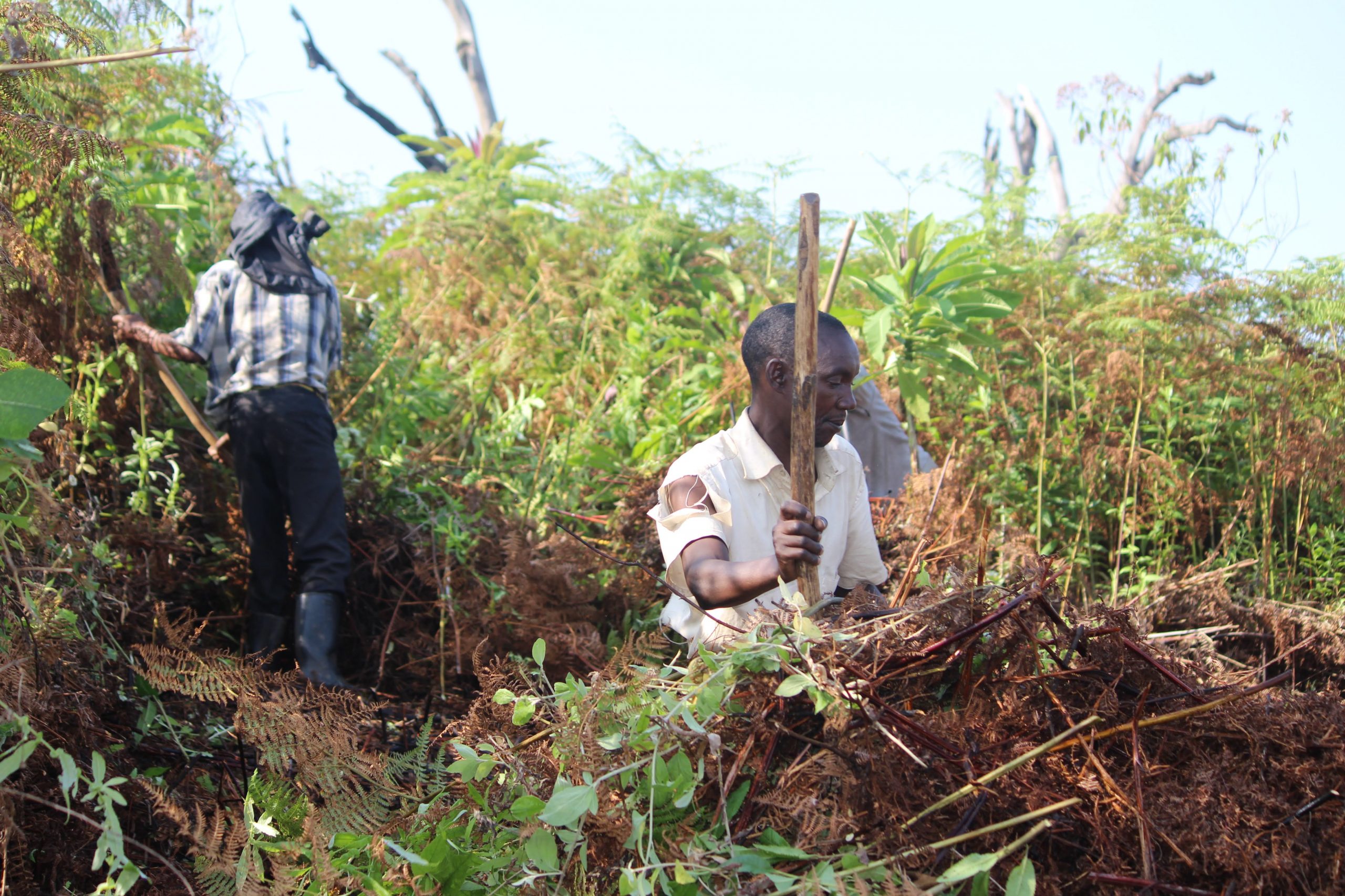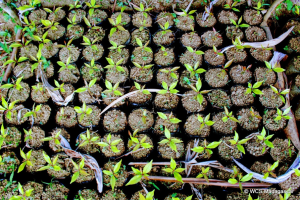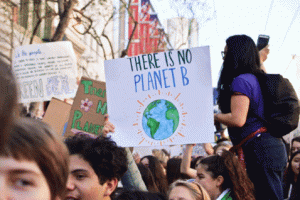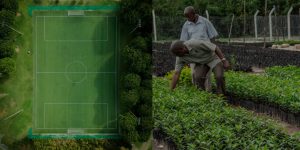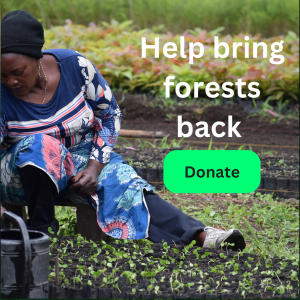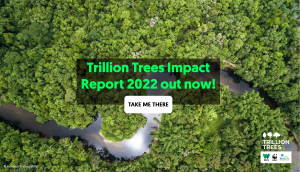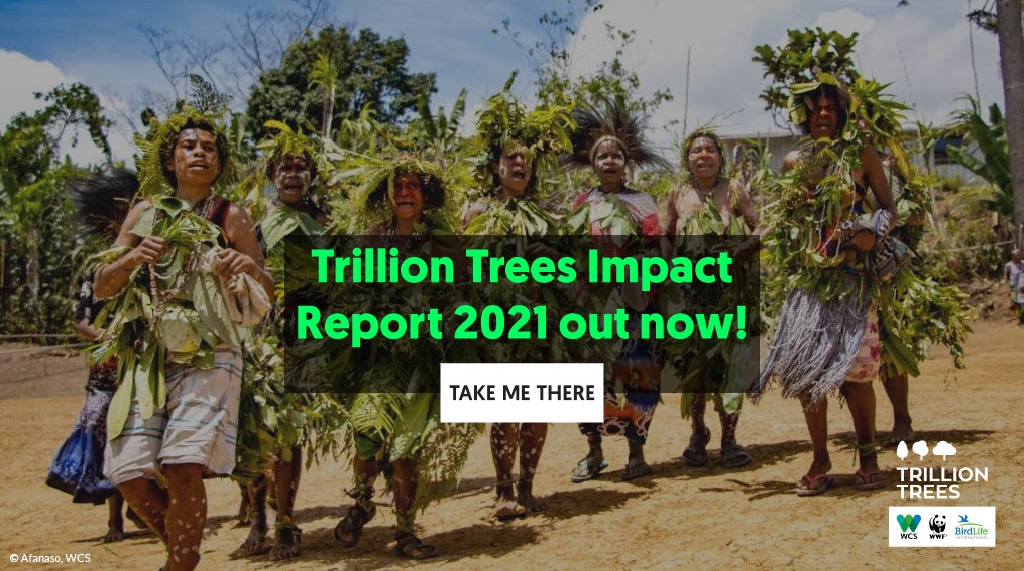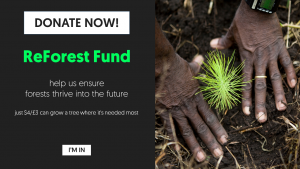Nyungwe in southwest Rwanda is the country’s largest and most biodiverse national protected area. The park has lost large areas of forest to fire, often resulting from the practice of smoking out bees to harvest wild honey from inside the park. Burned areas quickly became overgrown with bracken ferns (Pteridium aquilinum), which suppress the regrowth of natural forest trees – creating a barrier to restoration – and increase the forest’s vulnerability to fire. As well as providing immense benefits for wildlife, restoration of Nyungwe is particularly important when considering the park’s highland situation: a fragile watershed that provides water critical to Rwanda’s agricultural sector in the valleys below, and half of the country’s power through hydroelectricity.
The Rwandan government was one of the first to sign up to the Bonn Challenge, and has pledged to restore 2 million hectares of degraded lands. Between 2000 an d 2021, WCS restored forest in the Nyungwe National Park. Over the past 10 years, WCS tested methods to boost forest regeneration through fern cutting so that the natural forest is able to re-grow from the existing seedbed. Pilot restoration efforts showed that with three years of tending, the forest that grows back will naturally prevent the ferns from returning and create a stable forest micro-climate, which also benefits much of Rwanda’s tea growing area.
This restoration effort is complemented with a community programme that is improving smallholder farming practices in the area around the national park, through a successful village savings and loans scheme. It also supports local beekeepers to produce and sell honey through the Ubwiza bwa modern honey cooperative without the need for smoking-out wild bees.
WCS has invested in a Village Saving and Loan Association (VSLA) approach with communities living in the area around the park. Beneficiaries are local people who, in most cases, depend on the park resources for their livelihoods, and who find it difficult to secure other types of financial support. The VSL fund typically provides loans of between $100 and $250 per household, which are paid back over a period of 6 months.
Once within the VSL programme, participating communities can build up a credit history that enables them to access loans from a commercial micro-finance provider, which also provides financial literacy training to members of the VSL programme, and micro-loans so that farmers have the chance to grow their business activities.
How does this project score with the Trillion Trees Guide to Investing in Forest Restoration tool?
| Question | Score (1-3, with 3 being the goal) |
| Does the opportunity support or consider the protection of standing forest? Yes. The initiative focused on natural regeneration of forests and works with local communities to decrease deforestation through alternative livelihoods such as agroforestry and more sustainable bee keeping. | 2 |
| Is the opportunity located in an area where there will be potentially significant benefit for local people, nature and the climate? Yes. Nyungwe forest is one of the last remaining areas for the eastern chimpanzee and is one of the most biodiverse areas in Rwanda. Additionally, the standing forest stores large amounts of carbon, and new growth will add to this. | 3 |
| Does the opportunity promote or protect existing natural regeneration when possible? Yes. The project was centred around natural regeneration of native forest. | 3 |
| Does the opportunity prioritise or include native species? Yes. Because this project enabled the natural regeneration of the native seedbank, native species were prioritised. | 3 |
| Does the opportunity demonstrate partnership and engagement with communities in and around the landscape? Yes. The project has a high level of partnership with the local communities and also employed local people for fern removal. | 2 |
| Does the opportunity detail and provide evidence for carbon benefits? Yes. The project is able to roughly estimate carbon benefits of the project, but has not done so yet. | 2 |
| Does the opportunity detail and provide evidence for the benefits to local people? Yes. There are multiple benefits to local people which are detailed, and directly support activities that improve livelihoods. | 3 |
| Does the opportunity detail and provide evidence for biodiversity benefits? Yes. It is clear that critical biodiversity will benefit from restoring native habitat. | 2 |
| Does the opportunity you are considering have infrastructure, capacity and transparency on success rates, reporting and accountability mechanisms? Yes. The initiative monitors natural regrowth and maintained fern removal in areas for multiple years. The project is able to report results. | 3 |
| TOTAL | 23/27 |
Score:
22-24 – Investment highly likely to deliver benefits that deliver significant progress on substantial number of indicators addressing the triple challenge. The initiative has demonstrated a high degree of commitment to most indicators in evidence, data, sustained impact and accountability
Alternative score outcomes
9- 14 – Decision to invest should be based on matching investor and initiative objectives, and on verification of the methods for validating delivery. Likely that initiatives in this range will focus on a single benefit and have limited capacity to deliver against the triple challenge.
15-18 – Investment may deliver some co-benefits, though limited in scope. The initiative has demonstrated commitment to indicators that are relevant to forests that work for people, nature and/or the climate, by providing evidence of, impact and accountability.
19-21 – Investment likely to deliver benefits that offer measurable progress on a substantial number of indicators addressing the triple challenge. The initiative has demonstrated commitment to the majority of key indicators in evidence, data, sustained impact and accountability.
25+ – Investment highly likely to deliver substantially against the triple challenge. The initiative has demonstrated sector-leading commitment to key indicators in evidence, data, sustained impact and accountability to support forests that work for people, nature and the climate.

